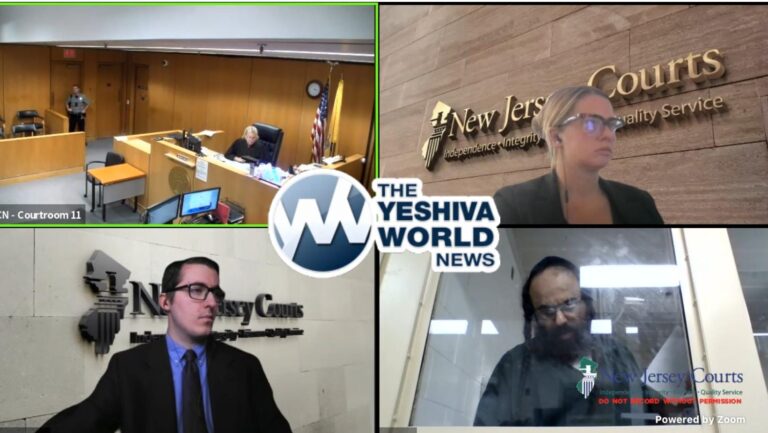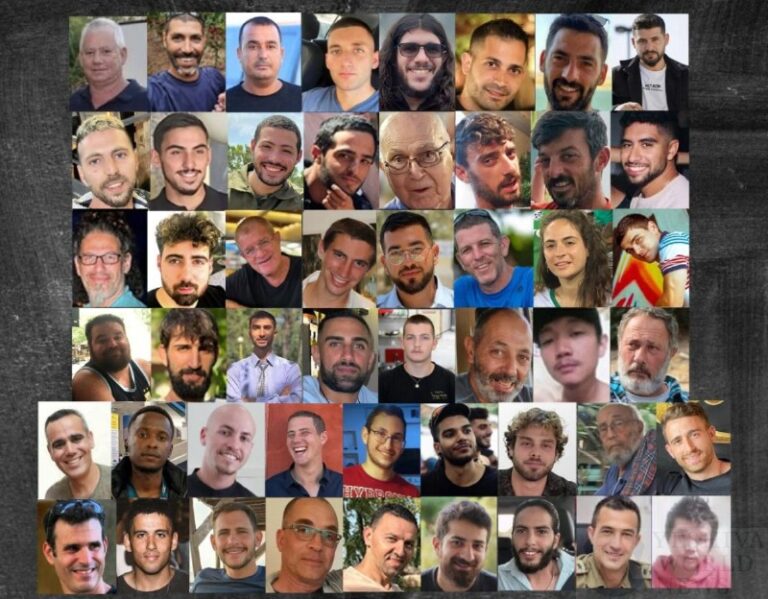 by Rabbi Yair Hoffman for the Five Towns Jewish Times
by Rabbi Yair Hoffman for the Five Towns Jewish Times
THE SCIENCE OF CHOMETZ
The world is filled with little tiny micro-organisms called “yeasts” that surround us. They are found everywhere – on the ground, on plants and trees, on human beings and even in the very air that we breathe. These airborne yeasts enter everywhere. They even enter into Matzoh dough, and feed upon the starches that are in the flour. The yeasts produce carbon dioxide. The carbon dioxide expands the gluten proteins in the flour. This is how dough eventually becomes Chometz.
The Gluten protein is the composite of two other chemical gliadin and glutenin. These gluten proteins are elastic. When the yeast break down the starches into alcohol and carbon dioxide, the dough begins to expand and to rise. The elements that help in the expansion of the gluten proteins are warmth, water and time. The yeasts produce more efficiently when there is warmth.
Another factor that is not so well known is atmospheric pressure. The higher the elevation, the lower the surrounding pressure and the more the carbon dioxide will expand.
THE WHEAT ON THE GROUND
Weather patterns in Eretz Yisroel and near Egypt are very different from that of Europe and the United States. In Eretz Yisroel there are only two rainy seasons. There are no rains otherwise. In Europe and in America it rains constantly.
Because wheat that has ripened fully can become Chometz while yet attached to the ground, one should cut the wheat while it is still green (See SA 467:5 and MB 453:22). This halacha is applicable in Europe and the United where it rains regularly. In Eretz Yisroel, however, the custom is to cut it later.
MATZOS MITZVAH AND SHMIRAH
There are two type of Matzos: Matzos Mitzvah and regular Matzoh. Matzos Mitzvah are those Matzos that are two be used on the nights of the Seder in fulfillment of the Mitzvah, “In the evening you shall eat Matzos..”
Matzos Mitzvah can technically be baked from wheat, barley, oats, spelt, and rye. However, it is ideal, a Mitzvah min haMuvchar, to bake them from only wheat (Ramah 453:1 and MB 453:1).
The posuk states “UShmartem es HaMatzos” (Shmos 12:17) – which literally means, “and you shall guard the Matzos.” Our sages extrapolated from this posuk that these Matzos require a special supervision that it not become subject Chometz. In other words, it is not enough to just assume that nothing happened to them. Rather, ideally, the wheat of which a person wishes to make Matzos Mitzvah must be guarded to ensure that there is no concern of them becoming Chometz. This guarding is called “Shmurah.”
NOT JUST A HECHSHER MITZVAH
It is interesting to that obtaining Matzos for Pesach is not just a hechsher Mitzvah – a preparation for a Mitzvah. It actually involves this Mitzvah in and of itself – that of “ushmartem es haMatzos – guarding the Matzos.” This is indicative in the language of the Shulchan Aruch (OC 460:2).
The Mogain Avrohom (460:1)writes that it is ideal to bake the Matzos oneself because of the notion of Mitzvah bo yoser mib’shlucho – it is a greater Mitzvah to do something oneself than through a messenger. The Avnei Naizer (OC 472) decries the prevalent custom of people no longer baking Matzos themselves. The Mishna Brurah cites the view of the Arizal that one who works up a sweat through baking Matzos receives enormous merit.
Although it can be done through an appointed messenger or shliach, just buying the Matzos off the supermarket shelves is not the best way to fulfill this Mitzvah.
There are thus three methods in how people obtain Matzah.
• They either are deeply involved in the baking.
• They appoint a messenger to bake it for them (which can be accomplished through an order sheet).
• They buy it off the shelf (not the best way).
There is, however, a workaround for the off-the-shelf purchaser. If time is spent examining whether there are folds or bubbles in the Matzah that would render the Matzah unfit, then one does fulfill the special Mitzvah of guarding the Matzos.
The Matzos must be made for the sake of the Mitzvah. If the Matzah is made without the proper intentions, there is a debate among halachic authorities whether one can fulfill the Mitzvah with that Matzah.
If there is a halachic doubt concerning either the flour or the Matzos, even though they would be permitted through the principle of “Rov” that they are from a majority which would permit them or through the principle of “Sfek Sfaikah” a double-doubt, – they should not be used for Matzos Mitzvah – the Matzos on the seder night. This is the ruling of the Bais Meir which is cited authoritatively (MB 467:17).
GUARDING THE MATZAH
A THREE WAY DEBATE
There is a three-way debate among the Poskim as to when it should be guarded. Should it be guarded from the time of the harvesting of the wheat, the grinding of the wheat, or from the time of the kneading of the Matzah itself?
Ideally, we rule that the guarding for the Matzah that we use during the Seder should be done from the time the wheat is harvested, but at least from the time that it is ground. If one is hard pressed, then one may rely upon the more lenient view of the time that it is kneaded (See Shulchan Aruch 453:4).
According to the letter of the law, the Matzah that is eaten during non-seder nights does not need to be watched. However, Israel is a Holy nation, and they have taken upon themselves the custom that even these other Matzos should be watched (See Be’er Heitev 453:8 and MB 453:25).
Those that are especially careful in the Mitzvah make sure to only eat Matzah that was guarded from the time of harvest for the entire duration of Pesach. This was the custom of the Vilna Gaon (See Biur Halacha 453 Tov L’Shomram).
One should examine the wheat kernels before they are ground to ensure that they are not infested with worms.
Even when guarding the Matzos it is necessary to do with the correct intention, for the sake of the Mitzvah (MB 453:21).
THE HARVESTING
There is a debate as to whether the harvesting may be done by gentiles or whether the watching has to be performed with the proper intention but the harvesting itself may be done by gentiles with a Jew overlooking the process. The custom is to be lenient in accordance with the opinion of the TaZ (see BH 460: “Ain.”)
However, it is the opinion of the Bach and the Eliyahu Rabbah (and also perhaps the Vilna Gaon) that it should be done by a Jew. The PMG also questions the view of the TaZ and recommends that the process be done by a Jew when possible.
The use of a machine known as a “combine” to harvest the wheat is considered Lishma (see Chazon Ish 36:2). There are, however, individuals that harvest the wheat by hand. It is thus preferable that the combine be driven by a Jew who has the proper intentions.
If the grains have either sprouted or split, then effort must be made to remove them one by one (See MB 467:19). One should make sure that they comprise less than 1/60th of the total yield. This is only in regard to making sure that the Matzah is kosher. However, Matzah made from such wheat may not be used for the nights of the seder.
When the grains are transported they should be placed in new bags (See MB 453:32). They should also be accompanied by a Jew and not merely transported by train (or truck) without supervision (BH), even if there is no concern that they will be switched or can get wet.
When storage facilities must be completely dry and free of bugs and rodents. The key or combination should be exclusively held by an observant Jew. Flour with a high moisture content does not store well. The industry standard for moisture content is 12%. Anything above 14.5% is considered a high moisture content.
GRINDING THE WHEAT
Pious people observe the grinding of the wheat themselves carefully to ensure that there is no concern of the wheat becoming Chometz during the grinding process (Ramah citing the Mordechai 453:8). At a minimum, a G-d fearing individual with some knowledge of the halachos should be performing it. A child or someone without such knowledge should not be the one performing the grinding (MB 453:41 citing the PMG).
The wording of the Ramah seems to differ from that of the Pri Magadim. Are the pious people watching it or doing it? Is it sufficient merely to ensure that the grains are ground properly or does the very act of grinding itself need to be done with the proper intentions?
INTENT REGARDING GRINDING
Just as there is a debate regarding the nature of “proper intent” regarding harvesting, there exists a debate about the proper intent regarding the grinding of the grains as well. Ideally, one should follow the stricter view requiring that the flour be ground with the proper intent.
Therefore, the grinding should be done by hand rather than by machine. This is more of a serious issue than having the harvesting done by machine. More Poskim hold that grinding is not an action attributed to the operator of the machine as much as the harvesting would be. When the term hand-ground is used, it refers to manpower rather than power by machine. Therefore, grinding done by a bicycle would also be permitted.
We find that the stringencies in regard to the grinding of the Matzah have been practiced for thousands of years. Indeed, the Talmud Yerushalmi (Psachim 20) relates that Rabbi Yossi the son of Rabbi Abun did not wish to use a grinder who had been grounding wheat not destined for Matzoh because he was afraid that the grinder’s clothing may have had other wheat on it that was not designated for Matzoh use .
The machine used for grinding should be for exclusive Passover use. The reason is that other grinding machinery processes grains that were washed. The liquid from this water can gather in the machines and cause the flour to become Chometz.
GRINDER AND ROOM MUST BE CLEAN AND DRY
To be sure, the flour also has moisture content, and if the stones of the grinder are not cleaned from this moisture, the stones may also cause the flour to become Chometz. Many G-d-fearing individuals replace the stones of Passover grinders each year, on this account.
If moist grains were ground in the room, the walls and ceilings must be cleaned in order to grind flour for Pesach, as the flour particles can fall and mix into the Passover flour.
When the grinding takes place in the rainy season, care must be taken to make sure that water is not tracked in with raincoats, wet boots and umbrellas. The workers should make sure that their clothing is clean and that their hands and beards are clean and dry as well. The concern is that a particle of flour will have mixed with the Pesach flour. Although it will be nullified by the more than sixty times the amount of kosher flour, during the holiday of Pesach itself it is reinstated. (MB 467:16)
ALLOWING THE FLOUR TO COOL
The grinding itself causes the flour to be warm. Therefore, a dough that is made on the day that the flour is actually ground is more susceptible to becoming Chometz on account of the additional heat in the flour. Therefore, one should not knead the flour on the day that the flour was ground – one should wait at least a day or two. Ideally, it should be two days later.
At a minimum one should allow the flour to cool overnight (SA 453:9 and MB 453:42). If, however, it was done sooner than that, the dough is not forbidden. Rather, one should take extra precautions and handle the dough even more often so that it not be given a chance to rise.
When dealing with high speed grinders and a large volume of grain, the machinery can get very hot. The BaDatz Yerushalayim issued guidelines that the machine be slwed down so that the grinder temperature not reach more than 30 degrees Celsius (86 degrees Fahrenheit), and certainly never above 35 degrees Celsius (95 degrees Fahrenheit).
When grinding the wheat by hand, however, the flour does not warm up to any significant degree, and technically, one does not have to wait. However, it is good to be stringent in this matter (Be’er Heitev 453:20).
THE FORMULA RECITED
When grinding the wheat one should recite the formula, “LeShaim Matzos Mitzvah– for the sake of the Mitzvah of Matzoh.” (extension of Be’er Heitev 456:4 regarding drawing of the water).
THE FLOUR BAGS
Ideally, one should be careful not to place the bags of flour one on top of the other. One should also avoid sitting on top of the bags because the additional warmth can cause them to become Chometz faster (See Ramah 453:7). If a person did place the bags on top of each other for a significant amount of time, they should be separated and the kneading should not begin until 24 hours have elapsed (MB 453:35).
It is permitted to place them next to each other even if they are touching, because in this manner they do not warm up to any significant degree. Likewise, it is permitted to stack the bags of wheat before they have been ground, because until they are ground they will cool.
It is also worthwhile to keep the bags of wheat elevated above the ground in case of a water leak or flood.
SIFTING THE FLOUR
Before the flour is kneaded it should be sifted. The sifter should either be new or one used exclusively for Pesach. One may not kosherize a sifter and use it for Pesach.
If a new sifter is not available, it is preferable not to sift according to the Mishna Brurah.
Preferably a 40 mesh sifter should be used for hand-ground flour and a 60 mesh sifter should be used for machine ground flour.
Nowadays most facilities use electric sifters.
When sifting the flour, one should avoid speaking because saliva may come out of his mouth and ruin the flour (See Ritva Psachim 35a).
After the flour is sifted it is important not to force down the flour into the bags. Forced flour does not knead well (Ramah 456:1).
TO BE CONTINUED
The author can be reached at yairhoffman2gmail.com











One Response
Storing the flower bags in a refrigerated room